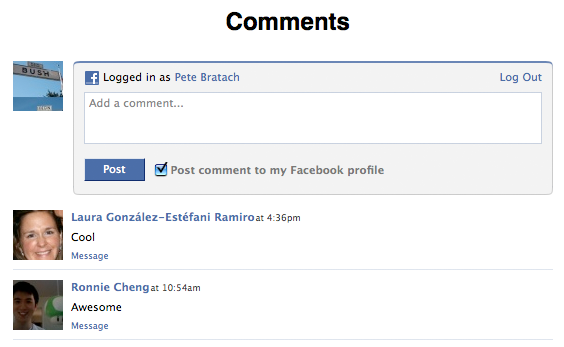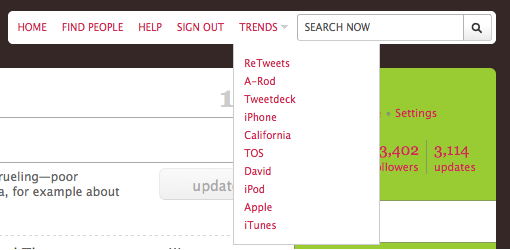by Jason Kincaid on February 19, 2009

Facebook has just launched its first widget for Facebook Connect, its recently-introduced platform that allows users to authenticate themselves using their Facebook logins. Dubbed ‘Comments Box’, the new widget allows site owners to integrate a comments section into their webpage. But unlike normal commenting systems, comments left in Comments Box will be relayed back to the users’ Facebook profiles, where the conversation can continue (users can also choose to receive notifications through Facebook whenever someone responds to their comments on other websites).
Until now only developers have been able to take advantage of Facebook Connect. This new widget represents the first time anyone, using a small snippet of code, can include some of the functionality afforded by the new platform. They’ll still need to create an account (as demonstrated in the video below), but compared to the effort required to fully implement Facebook Connect, this should be much easier.
Also important to note is the fact that Comment Box retains the Facebook ’style’, which for the first time will begin creeping beyond the borders of the social network. It’s also the first substantial widget created by Facebook, and the first in what will likely be a suite of similar widgets that could begin to encroach on the likes of JS-Kit, IntenseDebate (recentlyacquired by Automattic) and Disqus (some of which have already enabled Facebook Connect into their commenting widgets).
At this point it’s unclear how much blog owners with other commenting systems already installed will benefit from the new widget. According to Facebook’s blog post, “via [Facebook] APIs, you can access related comments made on Facebook as well to bring the conversation together”, which could help drive more comments. But in the end all of this content is going to be going to Facebook, which established blog owners and publishers are not going to like. It’s also bringing Facebook one step closer to becoming the universal standard for social content across the web - an idea that may alarm advocates for open standards like OpenID.

 A
A 






 —CBS pushes Letterman clip online for more buzz:
—CBS pushes Letterman clip online for more buzz:  The most obvious feature of
The most obvious feature of 
